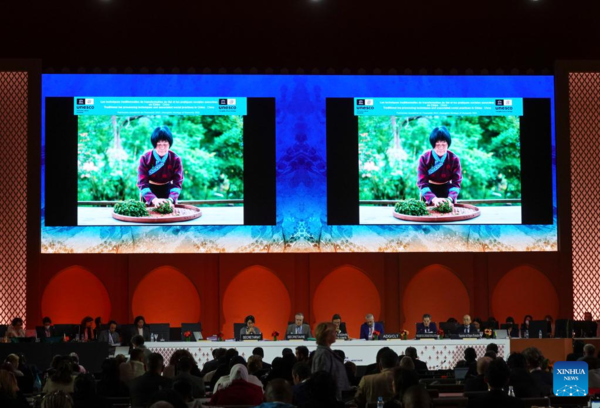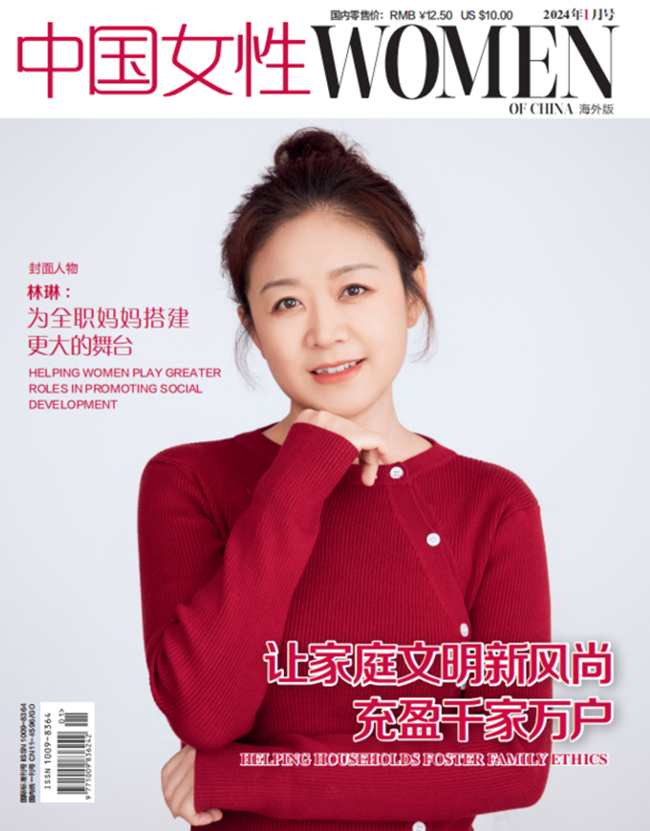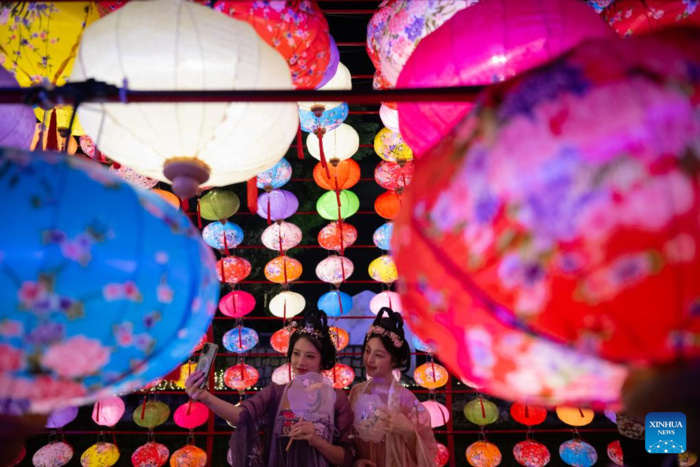China's Traditional Tea-Making Enters UNESCO Cultural Heritage List
 |
| The item "Traditional tea processing techniques and associated social practices in China" is examined during the 17th session of the UNESCO Intergovernmental Committee for the Safeguarding of the Intangible Cultural Heritage in Rabat, Morocco, Nov. 29, 2022. China's traditional tea-making was added on Tuesday to the intangible cultural heritage list of the United Nations Educational, Scientific, and Cultural Organization (UNESCO) in the Moroccan capital of Rabat. [Xinhua/Xu Supei] |
RABAT, Nov. 29 (Xinhua) — China's traditional tea-making was added on Tuesday to the intangible cultural heritage list of the United Nations Educational, Scientific, and Cultural Organization (UNESCO).
The item "Traditional tea processing techniques and associated social practices in China" passed the examination at the 17th session of the UNESCO Intergovernmental Committee for the Safeguarding of the Intangible Cultural Heritage ongoing here in the Moroccan capital.
China now has 43 items on the intangible cultural heritage list, continuing to be the most enlisted country in the world.
Wang Yongjian, head of the Chinese delegation to the UNESCO session, told Xinhua that the inscription will make this cultural heritage more visible to the public and help promote the respect for cultural diversity and human creativity.
"We will apply for and promote more of the intangible cultural heritage projects with Chinese characteristics and showcasing Chinese spirit and wisdom, so as to better promote Chinese culture to go global," he added.
The traditional tea processing techniques and associated social practices in China consist of knowledge, skills, and practices concerning the management of tea plantations, picking of tea leaves, manual processing, drinking, and sharing of tea.
Since ancient times, Chinese people have been planting, picking, making and drinking tea. Tea producers have developed six categories of tea: green, yellow, dark, white, oolong and black teas. Together with reprocessed teas, such as flower-scented teas, there are over 2,000 tea products in China.
Tea is ubiquitous in Chinese people's daily life, as steeped or boiled tea is served in families, workplaces, tea houses, restaurants and temples, to name a few. It is also an important part of socialization and ceremonies such as weddings and sacrifices, UNESCO added.
The UNESCO session, which runs from Nov. 28 to Dec. 3., examines 46 items submitted by countries across the world for inscription on the Representative List of the Intangible Cultural Heritage of Humanity, four items for the List of Intangible Cultural Heritage in Need of Urgent Safeguarding, five items for the Register of Good Safeguarding Practices, and one International Assistance request.
 |
| This photo taken on Nov. 29, 2022 shows a scene at the 17th session of the UNESCO Intergovernmental Committee for the Safeguarding of the Intangible Cultural Heritage in Rabat, Morocco. China's traditional tea-making was added on Tuesday to the intangible cultural heritage list of the United Nations Educational, Scientific, and Cultural Organization (UNESCO) in the Moroccan capital of Rabat. [Xinhua/Xu Supei] |
(Source: Xinhua)
Please understand that womenofchina.cn,a non-profit, information-communication website, cannot reach every writer before using articles and images. For copyright issues, please contact us by emailing: website@womenofchina.cn. The articles published and opinions expressed on this website represent the opinions of writers and are not necessarily shared by womenofchina.cn.






.jpg)

 WeChat
WeChat Weibo
Weibo 京公网安备 11010102004314号
京公网安备 11010102004314号